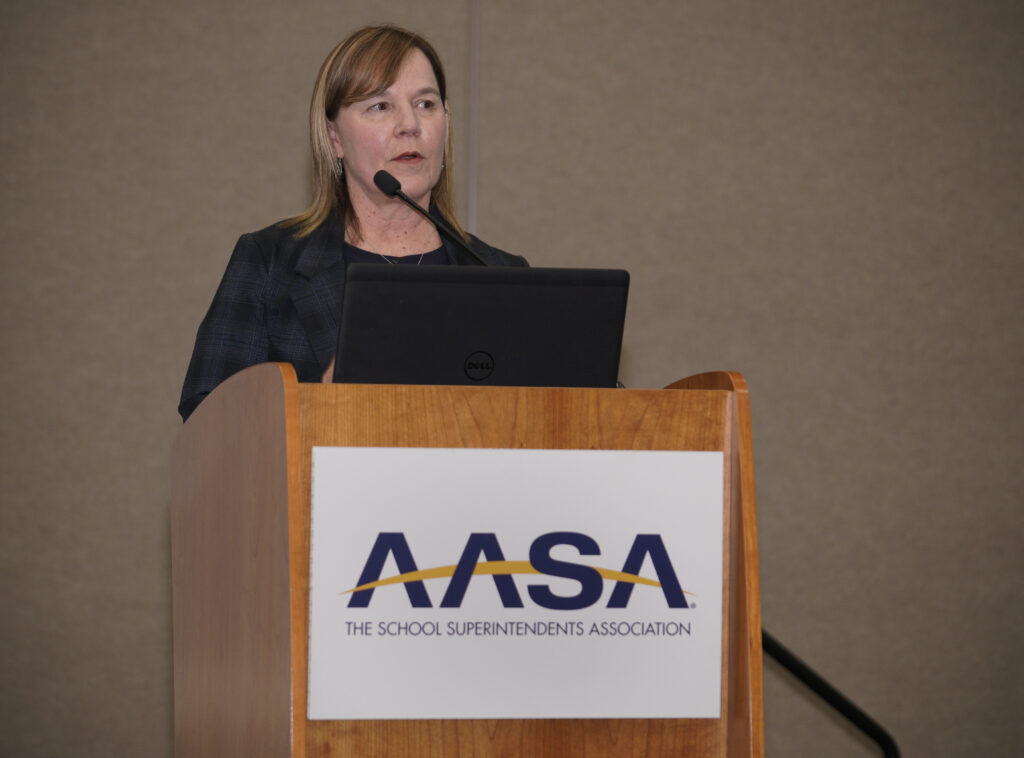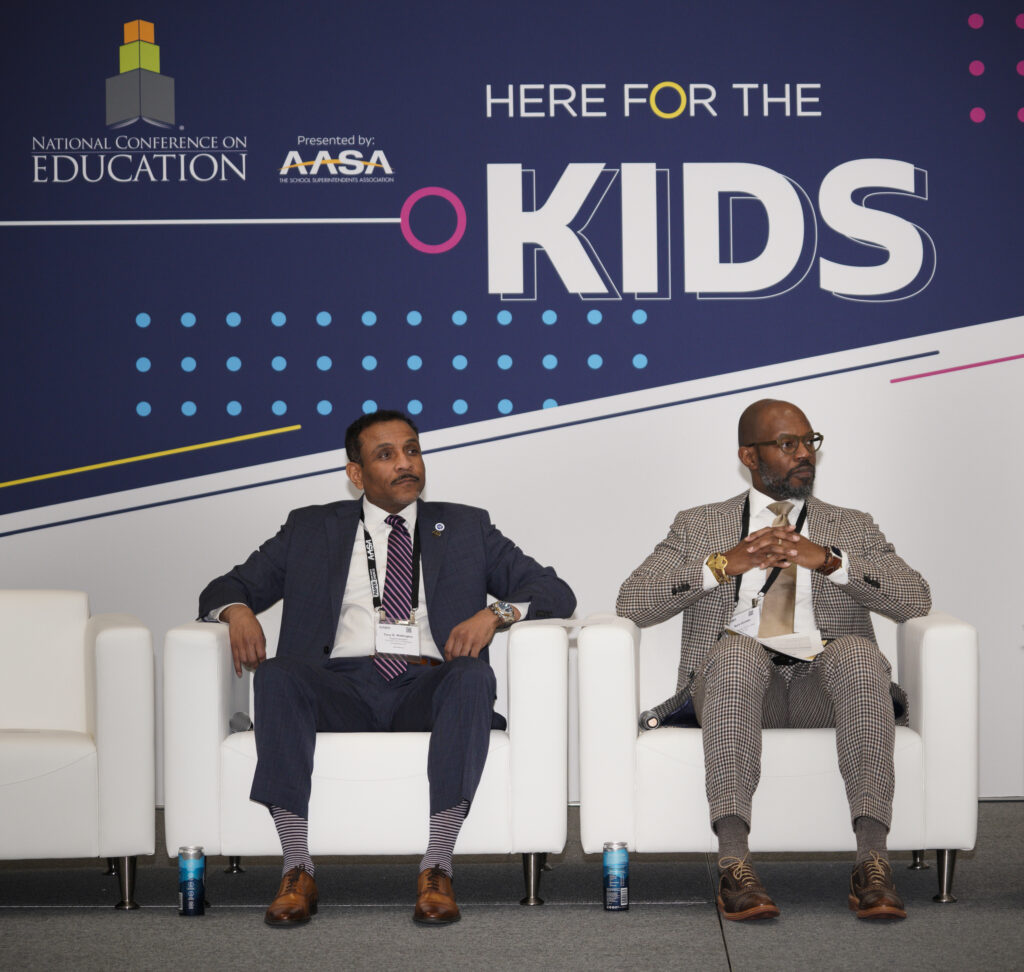Finding qualified, culturally responsive candidates to become the next principals of schools is a job made more difficult by a growing teacher and principal shortage.
Mark Gooden, professor of educational leadership at Columbia University Teachers College, made the case for equity-centered principal pipelines as a solution in his research report “A Culturally-Responsive School Leadership Approach to Developing Equity-Centered Principals” funded by the Wallace Foundation.
On Thursday, he delivered this hopeful message to a full audience during a Thought Leader session at the AASA national conference in San Diego.
In his research, Gooden developed the Culturally Responsive School Leadership Framework, which argues that equity-centered leadership involves the close scrutiny of the educational system’s role in creating and maintaining inequity.
Gooden says the first element of an aligned principal is the development of a deep understanding of systems of oppression that create inequitable opportunities for students, or what he calls “critical conciousness.”
It’s imperative for a leader striving to become critically conscious to have some degree of self-awareness and be willing to interrogate their personal assumptions and biases, Gooden said.
“There is a very strong need for these conversations,” Gooden said. “Too often are we afraid of these hard conversations, which lead to either inaction or wrong action.”
An aligned principal always must be able to create an inclusive environment within their school and community through identity-affirming curriculum and a clearly defined equity vision, Gooden said.

He was joined by Jill Baker, superintendent of Long Beach Unified School District in Long Beach, Calif., whose district has implemented equity leadership development programs for the past decade.
“Equity initiatives aren’t just tools,” Baker said. “They’re the fabric of everything we do.”
The Long Beach district offers 27 equity leadership pipeline programs, designed to develop culturally responsive and equity-minded principals and administrators from a variety of backgrounds. The programs serve as both a tool for recruitment and retention, with a focus on recruiting and retaining BIPOC leaders.
Tony Watlington, superintendent in Philadelphia, Pa., was also among the panelists. He presented five student achievement levers that he believes drive equity-centered leadership: qualified and supported teachers and principals, high quality and culturally relevant curriculum, regular student and teacher attendance, and partnerships with parents and the community.
He also lauded AASA’s professional learning academies, such as the National Aspiring Principals Academy, as excellent examples of leadership development programs that apply equity outcomes.
As a closing remark, Watlington stressed the importance of preemptive leadership development and reminded attendees that “we can’t remediate our way to excellence.”
(Eugenie Budnik, a senior majoring in journalism/advertising at San Diego State University, is an intern with AASA’s Conference Daily Online.)

